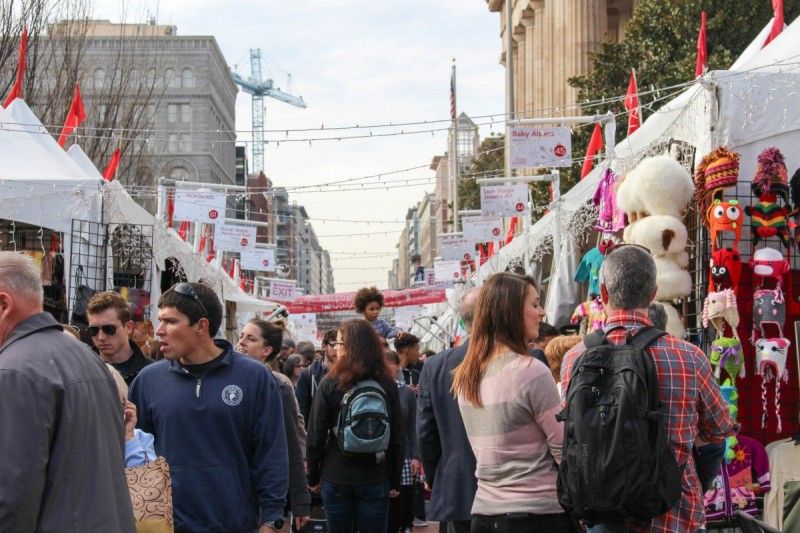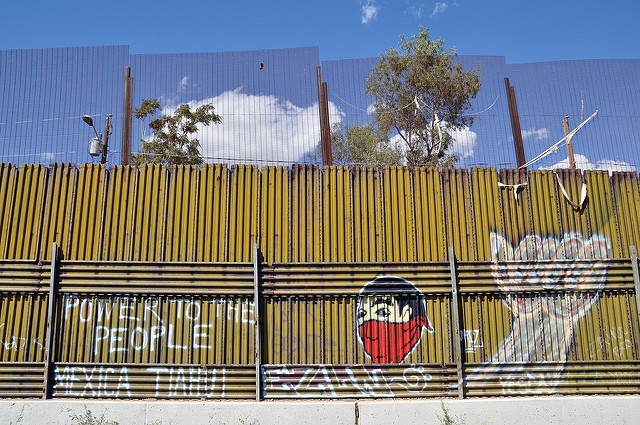One million Washingtonians is a future to embrace, not to fear

More people means livelier streets. Image by Joe Flood licensed under Creative Commons.
The District of Columbia's population just surpassed 700,000 residents, and will likely continue to grow into the future. The Office of Planning is incorporating these population projections into its comprehensive plan for 2040, which is now being written.
DC has an obligation to plan for where its future citizens will live and work. Just thinking about this future has caused consternation among activists who dislike development. They instead think that the District's plans should attempt to limit population growth. Experience elsewhere shows that denying that population growth is happening won't make people magically go away, and instead harms both current and future residents.
Where are all these new people coming from?
Most of greater Washington's new residents aren't outsiders — indeed, they're born here. In a typical year, more than half of metro population growth comes from what most of us call “childbirth,” but what demographers call “natural increase.” Every day in our region, about 100 more people are born than die, and as a result the region's population grows by almost 50,000 people a year.
Mayor Muriel Bowser poses with two of DC's newest residents. Most of greater Washington's population growth results from births, not from people moving in. Image by Executive Office of the Mayor.
The remainder of the region's population growth comes from migration — people moving into the area, whether from elsewhere in the US or abroad, minus those who move away. In recent years greater Washington has seen more people move away to other parts of the US than move here, but international immigration continues to add new residents.
One million people already fit into DC
There are probably over one million people within DC at the very moment you're reading this. During workdays, DC's “commuter adjusted population” grows by almost 80 percent to well over a million, a figure that might still be understated because it doesn't count visitors.
DC's daytime population is already well over one million. Is a resident population of the same all that different? Image by ctj71081 via Flickr licensed under Creative Commons.
Even DC's resident population has been considerably higher in the not-so-distant past. That was largely possible because even though there were many fewer houses and apartments, more people lived inside each house. Thus, most of DC's neighborhoods of detached houses, rowhouses, and even low-rise apartments had considerably higher population densities in the past than they do today. (By contrast, many high-rise parts of DC were considerably less dense then.)
All according to (the L'Enfant) plan
Pierre L'Enfant and George Washington intended for Washington to quickly grow into a very large city, even by modern standards. In the book Grand Avenues, historian Scott Berg writes:
The city would grow, [L'Enfant] told Washington in an even more startling proposition, until a million people would live there… L'Enfant was 'now directed' to plan the capital — and at a startling size. 'Five thousand acres' was an area that begged credulity, comparable to the footprints of Paris and London and as large as the occupied portions of New York City, Boston, and Philadelphia combined. (pages 78-84)
The resulting L'Enfant Plan of 1791 encompassed 20,272 building lots, at a time when the country's largest cities had but several thousand houses. The overall District was vast by urban standards of the day, even without the section subsequently retroceded to Virginia; today's District has 39,072 acres of land.
DC's area dwarfed the then-newly designated “metropolis” of London, which as of an 1801 census spanned 30,002 acres and counted 864,035 residents — long before elevators, railroads, or even sanitary sewers made high-density living more comfortable and healthful. It was then by far the largest city in Europe and the second-largest city in the world, after Beijing.
DC's founders planned a city larger than London -- a low-rise city of nearly one million residents in 1800. Image by Colnaghi & Co.
Washington saw startling growth in its early years. By 1820, it had come from nowhere to become the fifth largest city in the US, with a population of 28,800. Of course, fast-industrializing London was far larger, swelling to over 1.2 million residents within its same boundaries — still a small fraction of its ultimate size, and far larger than Washington would ever be.
Are limits feasible?
For centuries, governments have tried to solve the “problem” of capital city growth, and the resulting high costs, traffic congestion, and perception of decadence. Paris solved this problem in the 19th century by bulldozing its dirty, congested old capital and starting pretty much from scratch.
Most such attempts have involved moving the government to a new city. Even when such a move has happened, the previous capital has rarely been fully rid of traffic — whether it's New York City, Philadelphia, Delhi (and Kolkata), Rio de Janeiro, or (in the future, although these plans often falter) Cairo. Doing so also results in centuries of complaining from bureaucrats “exiled” to the inferior new capital.
A different approach is being tried by Chinese authorities in greater Beijing. There, authorities are directly limiting the city's population while keeping the government functions in place.
According to an Economist report, the results have been a human tragedy:
the real city government has a maximum target size for the capital's population: 23 million in 2020, only one million more than in 2016. To achieve this, the authorities have been booting out vulnerable people: migrants from the countryside. Their places of work are being closed down. Substandard housing, the only sort they can afford, is being condemned as unsafe. Activists say three million migrants have been evicted from Beijing and other big cities in the past five years.
Limiting the number of homes in a growing city creates growing competition for those homes. As Josh Stephens writes about a recent book criticizing gentrification, “If you set up a 'fight' between 'capital' and poor people, how do you think that’s going to turn out?”
In both nominally Communist Beijing and the nominally capitalist Bay area, that fight is easily won by the powerful, the rich, and incumbent homeowners — and lost by lower-income people, marginalized groups, and those coming from outside.
Life happens, so plan for it
Shouting “go back to where you came from” at prospective residents, or halting construction of new houses, won't stop greater Washington's population growth. Even if a wall were built to keep all new outsiders from moving in, greater Washington would still need to build hundreds of new homes every week, just to house the young people who were born and raised here.
Even walls won't stop population growth. Image by Jonathan McIntosh licensed under Creative Commons.
Even under-building homes, relative to the demand for new homes, directly leads to displacement, as the housing market — like a game of musical chairs — shuffles some of the residents out.
Whether we like it or not, our region's population is growing and changing, and people need homes to live in. For decades, DC neighborhoods have been soothed with comforting fibs that said otherwise: that the status quo can remain permanently so, that “stable neighborhood character” never needs to change, that “they” can live elsewhere. The results of procrastinating: we've woefully under-prepared as the region's tremendous housing demand shifted towards the core, and now are literally paying the price as rents spiral.
The new Comprehensive Plan is DC's chance to pivot away from exclusion and denial, and towards a future of inclusive growth. To get there requires acknowledging and understanding that places, like people, grow and change.
